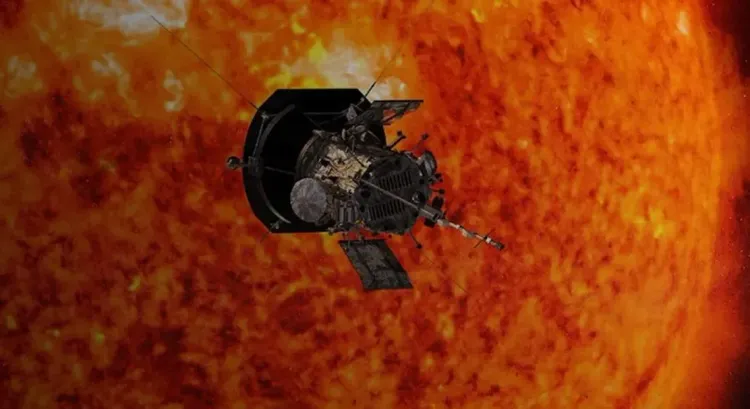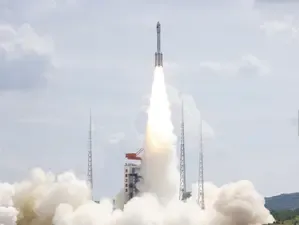NASA Verifies Safety of Parker Solar Probe Following Historic Close Encounter with the Sun

New Delhi, Dec 27 (NationPress) NASA announced on Friday that its Parker Solar Probe spacecraft is safe after it became the first human-made object in history to approach the Sun at a dangerously close distance.
The US space agency stated that Parker executed its record-setting flyby of the Sun on Tuesday, coming within just 6.1 million km of the solar surface. On Friday, it transmitted a beacon tone confirming its operational health following this close encounter.
During its nearest approach, known as the perihelion flyby, the spacecraft was not in communication with mission control on Earth, traveling at an impressive speed of approximately 430,000 miles per hour.
“Parker Solar Probe has phoned home! After passing just 3.8 million miles from the solar surface on December 24 — the closest solar flyby ever recorded — we have received a beacon tone from Parker Solar Probe indicating that the spacecraft is safe,” NASA shared via a post on social media platform X.
This confirmation means that “it’s in good health and operating normally,” remarked Michael Buckley, a member of the mission operations team at Johns Hopkins Applied Physics Laboratory in Maryland, in a NASA blog.
Buckley noted the signal was received “just before midnight EST on December 26.” The spacecraft is anticipated to provide detailed telemetry data regarding its status on January 1.
Since its launch in 2018, the Parker Solar Probe has been tasked with uncovering the mysteries of the Sun. This latest event marks the first of its three final and closest encounters with the Sun’s surface.
“This intimate examination of the Sun enables Parker Solar Probe to collect measurements that aid scientists in understanding how material in this region is heated to millions of degrees, trace the origins of the solar wind (a continuous outflow of material from the Sun), and discover how energetic particles are accelerated to near light speed,” Buckley explained.
To date, Parker has achieved 21 close approaches to the Sun, with the latest occurring on September 30.
These close passes have allowed scientists to pinpoint the origins of structures within the solar wind and could facilitate mapping the outer boundary of the Sun’s atmosphere.
The spacecraft has also performed seven flybys of Venus, utilizing its gravity to set the stage for a series of record-setting flights around the Sun. On November 6, Parker completed its seventh and final Venus gravity-assist maneuver, coming within 387 kilometers of Venus' surface.










